The 2025 NHL draft that took far too long has mercifully finished. Suffice to say, any of the 26 teams who voted for decentralization, you get a Z for that. Not an F, a Z. Let’s never do that again. Back to centralization, please.
Every team is getting a draft grade, regardless of how many players they selected. The grades are based upon the value each team extracted with their picks. So, a team with three first-round picks might have a lower grade than a team with three total picks because they reached on players and could’ve added significantly more talent to their organization, while the team with three picks added value and talent with each selection.
The grade is weighted against the expectation of what they should reasonably have done with the selections based on my model and team need. Reaching on a player to address a team need while leaving a higher-value player on the board is going to lower the grade. When a team is drafting in the top 16, it is because that team wasn’t good enough for the playoffs and the organization needs talent. Ditto for teams with multiple first-round picks — those aren’t acquired unless valuable players are being traded away for purposes of rebuilding or retooling.
Trade scenarios will be considered, because it is a good strategy to accumulate value by moving down, or acquiring players that fit the organizational timeline. A team that trades back, acquiring multiple selections and extracts value with those selections will likely be graded higher than a team who traded up to select “their guy.” A team like the Montreal Canadiens, who traded multiple picks to acquire and extend a top-4 defenseman in Noah Dobson will have that factored into their grade because they entered the draft with those assets and used them to acquire an asset that aligns with their organizational goals.
Here is every team’s grade for the 2025 draft:
A grades
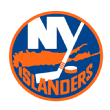
For day one alone, the Islanders are getting an A+ — and if there were a higher grade, they’d be getting it. Adding a franchise defenseman in Matthew Schaefer who will not only impact the organization positively through his play, but is likely to become a future captain is incredible. However, it was also the trading of Noah Dobson, who was not going to re-sign and using those selections to nab the falling Victor Eklund and potential middle-pairing defender Kashawn Aitcheson that boosted the grade.
The Isles didn’t overthink anything. You have to hit on your first-round picks, and every time they made a selection, they took quality players that confidently project to be impactful NHLers. There’s a real chance the Isles added a franchise cornerstone, a top-six forward with a blend of hard and soft skill, and a tough-to-play-against defender with raw offensive potential.
On Day 2, GM Mathieu Darche continued stockpiling projectable NHL talent. Danill Prokhorov has the potential to become a high-end power forward, and Luca Romano should play NHL games in a middle-six role. Tomas Poletin is a reasonable bet on upside and Burke Hood in the late rounds is excellent value. This could be a franchise changing draft for the Islanders.
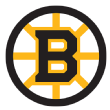
The Bruins were the beneficiaries of some interesting decisions at the top of the draft, and managed to secure their top-line center for the future, and third best player in the draft, James Hagens. The Bruins have needed help up the middle for a few years, and Hagens is not far off from becoming an NHL star. He was one of the most valuable picks in the draft, simply because players with his talent and skill aren’t available at No. 7 very often.
Following that up by drafting Will Moore and Cooper Simpson were value picks in their range, and both have legitimate NHL upside. They will take longer to get to the NHL, but I like Boston’s accumulation of talent in the draft with those two as well as Liam Pettersson on the back end. There’s a fair chance Boston gets four NHLers from this draft, including one absolute stud on their top line.
1:48
Adam Sandler announces Bruins pick at NHL draft
Adam Sandler gives a nod to his famous “Happy Gilmore” character to announce the Bruins picking Boston College’s James Hagens with the seventh pick.

I feel like we say this every year, but my goodness the Carolina Hurricanes did it, again. They got tremendous value in their trade back with the Canadiens, using those picks to draft two projectable NHL talents in Semyon Frolov and Charlie Cerrato. Frolov’s stock grew as the season progressed, and he’s got a real chance at becoming a 1B goaltender in a tandem. Both Ivan Ryabkin and Kurban Limatov provided a ton of value at their spots, and both have legitimate paths to become NHL players. Ryabkin in particular is a player that could become a real gem if he improves his consistency.
In the late rounds, I loved the Filip Ekberg and Viggo Nordlund selections as both are smaller, but highly skilled wingers with scoring potential in the NHL. There’s a boom-or-bust quality to both of them, but if they hit, there’s top-six scoring upside and those are exactly the types of players you should be swinging for in the late rounds. It’s likely the Canes have to wait a few years for these players to have an impact, but they should get at least two or three from this draft class.
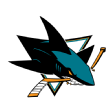
Any time you add the best forward (Michael Misa) and best goalie (Joshua Ravensbergen) in the draft, you’re going to be happy. There’s a real chance the Sharks come away with a starting goalie and an elite forward who scores over a point per game. That alone, would find them graded with at least a B+. Add in Simon Wang, the highest-drafted Chinese-born player in NHL history, with elite skating ability and a 6-6 frame, the Sharks added to every area of their prospect pool.
I thought Blake Fiddler would have been a more sound selection at 33, but the Sharks like Wang’s raw ability and upside which is a decision I can get behind. If Wang hits, he’s going to be an impactful defender in the NHL that many teams wish they’d drafted.
Getting Cole McKinney at No. 53 was great value as well. McKinney’s got more offense to give and at a minimum, he’ll be a bottom-six player that is reliable defensively and on the penalty kill. When all is said and done, there’s a real chance the Sharks get four players from this draft, including a dual-threat, two-way center who is going to make the Sharks a matchup nightmare for teams over the next decade.

Getting Roger McQueen, a player with top-five talent, at No. 10 is tremendous value for the Ducks. They add another big, powerful forward to their stable of young players, and McQueen’s skill set is elite. If McQueen hits his ceiling, the Ducks have a unicorn, and someone who could dominate on both sides of the puck.
Eric Nilson in the second was another valuable selection. He’s a reasonable bet to become a bottom-six contributor who the Ducks rely on to play secondary matchups and responsible defensive hockey. Neuenschwander is a more than reasonable bet in goal, and getting him in the late rounds adds to his value.
The Ducks likely added at least two quality NHLers to their organization today and got good value all over the board, while finally trading John Gibson — the rumors can end.
Note: if there were bonus points for synergy, the Ducks would be getting an A+ for drafting McQueen, sending him to Disneyland and doing a photo op with Lightning McQueen. Here’s hoping he wears No. 95 because the fun marketing opportunities would be plentiful.
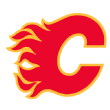
Not only did the Flames address organizational needs with this draft class, they got significant value with the Cullen Potter and Aiden Lane picks, while getting Cole Reschny and Theo Stockselius in the right range. All of those players are going to need development time, but are reasonable bets to play NHL games.
Reschny and Potter are high-end upside picks with NHL attributes that could see them make an impact in the middle six. The Flames needed centers, and there’s a decent chance that at least two of these players provide value at center for them. If Potter moves to the wing, he may flourish as a speedster with an excellent shot.
I liked the swing on Aiden Lane late in the draft, as he’s a late bloomer who has some bottom-six upside. The Flames extracted a ton of value with their selections this weekend and should be pleased with their new group of young talent.

There’s a lot to like about what the Red Wings did this weekend, and they likely nabbed at least two long-term NHL players in Carter Bear and Eddie Genborg. Bear was good value in the teens, and brings a projectable two-way game with high-end playmaking skills. As an added bonus, he’s got some of the coveted hard skill teams were looking for because he plays in the dirty areas, wins puck battles and creates space for his teammates. He’s two or three years away, but should be a quality top-six forward when he’s ready.
I liked the Genborg selection as a good middle-six player that thrives with skill. He’ll be a good complementary piece when he’s ready.
Once the top tier of goalies were gone, I really liked the swing on Michal Pradel. The Red Wings aren’t short on goaltending prospects, and he’s another guy who has a chance to be an NHL goaltender. Count me as a fan of the Michal Svrcek pick in the fourth round because of his upside as a speedster with competitive bite. Add in the John Gibson trade — which gives the Red Wings immediate help — and they had a pretty good weekend.

The Predators were a mixed bag for me in this draft. Did they get some high-end talent? Absolutely, without a doubt. Did they leave some high-end talent on the board? Unequivocally.
I understand betting on Brady Martin and why so many teams liked the player, but Nashville is starved for elite talent and left James Hagens and Porter Martone on the board. If Martin hits, he’s a valuable playoff player, but there’s not many scenarios where he’s more valuable than Hagens or Martone.
I loved their swing on Ryker Lee, who could be an elite top-six forward if his skating improves. His offensive toolkit is one of the draft’s best. Cameron Reid in the 20s was solid value, and he’ll be a quality middle-pairing defender for years. I really liked the Jacob Rombach and Jack Ivankovic selections, too. The Preds needed a goaltender and if Ivankovic grows, he’s got the foundation of talent to be the best goalie of the crop.

Strap in because this one was a ride!
The Flyers needed a center, passed on Hagens, but got Porter Martone. I love Martone’s game and think he’s got a ton of potential, but it feels like they went with size. Having said that, I’m not going to dock them grading points because Martone at No. 6 was excellent value. If his skating improves, he’s going to be a stud.
The decision to trade up to No. 13 and select Jack Nesbitt not only left a ton of value on the board from a player perspective, they lost the pick value trade to their state rival. Nesbitt will be a solid third-line center, but I have some serious concerns about the Flyers drafting for size with a lower ceiling.
Outside of that, I loved the Carter Amico, Jack Murtagh, Shane Vansaghi and Matthew Gard picks. The Flyers clearly had a mission to get bigger and meaner, because every single pick was spent on a player with some level of size and competitive meanness that Rick Tocchet is going to love. The Flyers certainly got a lot better this weekend, but there is little doubt that some talent was left on the board.
2:00
Charles Barkley announces Porter Martone as No. 6 pick in NHL draft
NBA Hall of Famer Charles Barkley helps the Flyers select Porter Martone with the sixth pick of the NHL draft.

The Kraken got a lot better this weekend, particularly with their first two picks. Jake O’Brien projects as an offensively gifted top-six playmaking center. Seattle has a ton of quality young centers and whether they move one or two to the wing or trade one to address another need, the Kraken are well positioned because they constantly draft the best available players.
Blake Fiddler is another example of that, with the Kraken grabbing a first-round talent in the second round. He’s very likely to be a middle-pair defender that plays shutdown minutes. Not only does Seattle address an organizational need, they get excellent value.
I liked the Will Reynolds and Maxim Agafonov picks as well. Both have some NHL-caliber traits and are worthy swings where the Kraken took them. Overall, another good draft for Seattle.
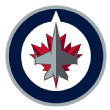
I, for one, loved what the Jets with their draft capital. Adding Sascha Boumedienne to a prospect pool that is razor thin on defense was tidy work. He’s mobile, saw significant development in his defensive play and should become a quality middle-pairing defender and PP2 guy if his decision making improves.
Viktor Klingsell was a high-value addition when the Jets grabbed him. He was one of the best skilled players taken in the late rounds, and that’s exactly the type of player you take in the fifth. If he fills out, there’s a middle-six player in there.
I also really liked the Owen Martin and Jacob Cloutier picks. Martin plays a pro-style game that should see him develop into a depth player, while Cloutier is a home run hack at a smaller player who is highly competitive and could be a nice addition if his skating improves. The Jets got good value with all their picks, swung on talent and improved their prospect pool.
B grades

The Blackhawks clearly had a modus operandi here, and it was “big dudes who can skate.”
I liked Anton Frondell at No. 3, but they definitely left talent on the board with Hagens to opt for Frondell’s size. He’s likely going to be a top-line forward, so you can’t be too upset with that organizational decision.
Both Vaclav Nestrasil and Mason West were a little high for my liking, but both of them are very raw, long-runway type projects with sky-high upside. Given the prospect cupboards, Chicago can afford to take those kinds of swings because both of them could end up as middle-six complementary pieces that are incredibly difficult to play against. At a minimum, they bet on big guys with skill and I can get behind that.
Nathan Behm and Julius Sumpf provided good value at their respective slots, and I think there’s a chance that one of them plays NHL games. Certainly, the Blackhawks should get two or three NHL players from this crop of picks, but their development staff is going to be tested.
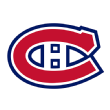
The Canadiens had themselves a weekend. Trading away the selections that amounted to Victor Eklund and Kashawn Aitcheson to acquire Noah Dobson fit their timeline, but that may turn out to be a hefty price.
They love Alexander Zharovsky and it is easy to see why, but gave up quite a bit of pick value to get him. Nevertheless, I like Zharovsky’s game, and he should be a quality complementary player in the middle six.
In the middle rounds, I absolutely loved the selections of Hayden Paupenakis, Bryce Pickford and personal favorite — L.J. Mooney. All of those players have legitimate NHL upside to varying degrees. Mooney’s small, but his compete level and offensive abilities provided outstanding value. Paupenakis should become a bottom-6 player and Pickford is a great bet on an overage defenseman with scoring ability.
All in all, it’s hard not to be happy with the weekend, even if they parted with some very valuable assets to get their guys.
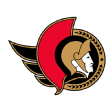
Friday night was a banner night for the Senators. Trading back two spots and acquiring the pick that allowed them to trade for Jordan Spence while extracting tremendous value with Logan Hensler at No. 23 is high-end asset management. I really like Hensler’s game and believe he has the tools to become a solid 2nd or 3rd defender who would complement Jake Sanderson very well. The fact that he’s right-handed and very mobile with an NHL frame makes him very valuable.
The Senators are thin in goal, and taking a swing on Lucas Beckman was a decision that made a lot of sense. Bruno Idzan is a high-upside bet, and worthwhile one based on his USHL production. He’s got the potential to be a late bloomer that contributes in a depth role.

The Capitals extracted excellent value with their first two picks in the draft, and both players are solid bets to become middle-six contributors at the NHL level.
Lynden Lakovic has the potential to be a big, dual-threat producer and would be even more exciting if he learns to use his 6-4 frame to physically impose himself on opponents. The ceiling is high for Lakovic, and getting a top-15 player at No. 27 is good work.
Milton Gastrin is one of the more complete players in the draft and shouldn’t be far off from the NHL. He’s got third-line center written all over him, and could provide more offense than most think.
Outside of that, I liked the selection of Maxim Schaefer, who has more skill than most of the players taken in the fourth round. Given what they had, the Caps got good value and came away with at least two players that should play impactful roles in their lineup.
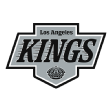
The Kings had a fine draft — nothing to be overly excited about and nothing to be disappointed with, either.
They got some value with Jimmy Lombardi, who has projectable NHL play driving ability and skill. If his speed improves, he could really pop. Petteri Rimpinen was another value-added pick in the late rounds, and worth the swing based on his development curve. Kristian Epperson provided value in the third round as an overager, and should fit nicely in a third-line role when he’s ready.
Henry Brzustewicz was a fine pick, but the Kings took him a little early considering some of the other valuable defensemen on the board at No. 31. They’re betting that his development skyrockets in London, which they’ll need if he’s going to provide value in a second-pair role. Vojtech Cihar was a bit rich for me in the second round because he lacks upside, but I don’t doubt he’ll be an NHL contributor in the bottom six.

The Wild didn’t give Judd Brackett a lot to work worth, but there was value to be had with their selections.
There’s more offense to give with Theodor Hallquisth, and next season in the SHL will go a long way to determining what his NHL projection is likely to be. At minimum, he’s a reliable puck mover who has the tools to be a depth defender if his skating improves.
The real value came from selecting Adam Benak, who is one of the best skaters and smartest players in the draft class. But he’s small, so of course he fell. He was by far the most skilled player available in the fourth round, and if he grows a couple inches, he’s got the special talent to be a top-six player. I liked the Justin Kipkie selection, he was one of the best overage defensemen available in the draft and a worthwhile bet.

The Devils were a mixed bag, drafting guys with good value and a few head scratchers — including a player who didn’t play a single game this season (Sigge Holmgren).
I loved the Ben Kevan selection at the end of the second round. He’s a great skater with good offensive qualities. Conrad Fondrk was another good upside bet with good passing and shooting skill. Both could become valuable members of a third line that contributes offensively.
I liked the Mason Moe and Gustav Hillstrom selections as well. They have a longer path to become NHL players, but both are good bets and decent value for the draft slot. The Devils did well for what they had.

Wes Clark loves to take big swings and he did it again. I absolutely love Benjamin Kindel as a player, and think there is real upside as a top-six forward, but I’m not convinced he’s going to be better than some of the players they left on the board. Trading down to acquire a third first-round pick was great, but again, value was left on the board.
Bill Zonnon is going to be an NHLer, there is little doubt about that. He was in the right range and should be a valuable middle-six asset. I thought the Penguins could’ve traded back with the Will Horcoff pick, but I understand why they like him. If he hits his ceiling, he’s going to be a solid complementary player in the middle six . Failing that, he’s likely to top out in a depth role.
On Day 2, the Pens got excellent value Charlie Threthewey who could blossom into a 4th or 5th defender with excellent puck moving and defensive play. Peyton Kettles and Quinn Beauchesne were two other selections I liked, and both have legitimate NHL upside.

Given the Mammoth’s stated goal of adding size and tenacity up front, it was not surprising to see them draft Caleb Desnoyers. I would’ve elected for Martone if size was their goal, because he’s got higher offensive upside, but Desnoyers is a solid bet to become a second-line, two-way center. He’ll shoulder all the matchup pressure and free up the likes of Logan Cooley and Barrett Hayton to play offensively. It’s a very understandable pick for the Mammoth.
I loved the selection of Max Psenicka in the second round. I think he’s got a higher offensive upside than he’s given credit for, with potential to become a quality shutdown defender on the second pair. Their other selections don’t project to be NHL players, but the first two selections should be stalwarts in their lineup for years to come.
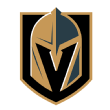
They didn’t have a lot to play with, but I loved the Jakob Ihs Wozniak and Mateo Nobert selections. Ihs Wozniak has one of the best shots in the draft, and should score 20-25 goals per season in the NHL. Trading up to get a prospect who will have value around the league (before they inevitably trade him) is smart business. Getting a player with high 30s talent in the late stages of the second round is quality value.
Nobert is another good player that thrives with offensive talent and could become a quality complementary player down the line. He was a more than reasonable bet in the third round. For what they had to work with, the Golden Knights should be happy with how they fared.
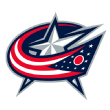
The Blue Jackets addressed a need and got great value by adding Jackson Smith in the middle of the first round. If Smith’s offense continues to develop, there’s a real chance the Blue Jackets drafted the second best defender of the class much later than they should have.
The Pyotr Andreyanov pick was a head scratcher, not because I don’t believe in his potential — but because he wasn’t the top goalie on the board, and the Blue Jackets could have traded back to get him. Trading back would’ve been best if they wanted a goalie as there was an opportunity to grab the likes of Lakovic and Hensler, who would’ve been great organizational fits. Andreyanov is five or six years from playing in North America, which is a long time to wait for a first round pick, but upside as a 1B starter is attractive.
I also liked the Malte Vass selection and thought it provided value.
2:50
Johnny Gaudreau’s wife announces the Blue Jackets’ draft pick
Meredith Gaudreau, Johnny Gaudreau’s widow, joins the NHL draft to announce the Blue Jackets selecting Jackson Smith with the 14th pick.
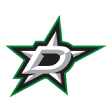
The Stars not selecting until pick No. 94 and proceeding to get a top-40 player is very Dallas Stars of them.
Cameron Schmidt scored more than 40 goals in the WHL, and is one of the best goal scorers in the draft. But, he’s short so teams decided to draft players with lower upside and projectable talent. He’s a quality skater and players with two separating skills are almost never available at that spot. If Schmidt hits, we’re going to be talking about how the Stars “did it again” just like they did with Logan Stankoven.
Outside of that, the Stars had nothing to write home about. The selection of Schmidt alone provided the highest value in the draft from ranking and projection to selection, something the Stars are all too familiar with. At some point, the skill and upside need to outweigh the height, because too many taken before him are far less likely to become NHLers.
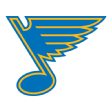
For what the Blues had to work with, they got some good value. I loved the selection of Justin Carbonneau at No. 19. If he puts it all together, he could be a premier power forward in the NHL with his size, skill and ability to create scoring opportunities. He’s got some of the best upside in the draft, and could be a quality top-six forward for the Blues.
They didn’t select until much later on Day 2, but I liked the Mikhail Fyordorov selection as a reasonable bet given his production in the MHL. He’s got a long way to go, but the offensive creativity is exactly the type of thing for which the Blues should be swinging.
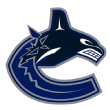
The Canucks’ draft was fine. They left value on the board to take Braeden Cootes, but he’s going to be a solid middle-six contributor and addresses the organization’s pressing need for centers. They tried to trade that pick for immediate help, but in the end, Cootes was right in that range.
I loved the selection of Aleksei Medvedev, a pick that has Ian Clark’s fingerprints all over it. He’s big, he’s moldable and he’s got the mental makeup to be a tandem goalie in the NHL.
In a departure from previous years, the Canucks used most of their picks on players with scoring profiles and skill, something their prospect pipeline needs. They made reasonable bets on upside picks in the mid-rounds who will test their development staff. They left value on the board with Kieren Dervin, and could’ve swung on Schmidt or Mooney, but overall, a reasonable draft.
C grades

Buffalo has a modus operandi that was quite a bit different from previous drafts, and it showed.
Radim Mrtka is a reasonable bet to play top-four minutes in the NHL, and fits the profile of big and hard to play against. That was a bit high for him and left significant talent on the board, but the Sabres clearly identified Mrtka as an organizational need.
David Bedkowski was a good selection as one of the most violent, physical defenders in the draft, and if he makes it, will be a nightmare in a depth role. There’s a real chance that those are the only players who play NHL games for the Sabres in this draft class, as they departed from their previous MO of drafting high-end skill.

For a team that didn’t have any high picks, or many picks at all, I liked the swings the Oilers took, particularly on Tommy Lafreniere and David Lewandowski. They don’t have strong NHL projections by any means, but betting on their upside is a smart thing to do. I had those players going earlier than they did, giving the Oilers good value with their selections. If either Lafreniere or Lewandowski hit, they should provide complementary scoring in depth roles, something the Oilers will absolutely need while their contention window is open.
I debated docking the Oilers for not outbidding the Red Wings for John Gibson and addressing a significant organizational need, because the probability of Gibson helping the Oilers out in their contention window far exceeds the probability of any draft picks doing the same. With Joel Hofer re-signing with the Blues as well, the Oilers are going to have a tough time improving an area that desperately needs immediate help.
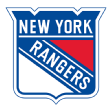
The entirety of this grade hinges on Malcolm Spence, who provided tremendous value for the Rangers in the second round. There is little doubt he will become a middle-six pest, and if the Rangers can sort out their development issues, he’s got the chance to be a second-line winger.
Sean Barnhill is a fine selection, but probably a little high. There’s NHL potential there with his skating, but he’ll need to improve his decision making to be a depth NHL defender. I liked the swing on Mikkel Eriksen. He could become a depth-role player, but should comfortably become a quality AHLer. The Rangers left value on the board at every other selection.

There’s not a ton to write home about when it comes to the Lightning’s draft class, but I really liked Ethan Czata selection. Lightning fans love Anthony Cirelli and Brandon Hagel, and Czata is built in that mold. He’s got good touch around the net and if he adds speed, has all the tools to become a pesky middle-six contributor that is a nightmare to play against because of his physical nature.
I liked the swing on Benjamin Rautiainen because if fills out, he’s a brilliant shooter with good puck skill. If he hits, he’s got the potential to be a complementary scorer in the NHL. Outside of that, he’s likely a high-end AHL player that can fill in when injuries occur.
D grades
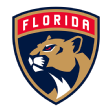
When you win back to back Stanley Cups, you’re probably not going to have an elite draft because you don’t have many picks.
I’m a fan of the Shamar Moses pick, and think he provides value at that spot with an outside chance to play NHL games. The Panthers are unlikely to get NHL players from this crop of prospects, but the Moses pick bumps their grade up because he has an NHL projection in a depth role, something the Panthers will need if they intend to keep their contention window open for the next few years.

They didn’t have many picks, and I didn’t love what they did with any of them. I thought they left talent on the board with each of their selections, and didn’t take any players with an NHL projection. Given their contention window and few draft picks, I would’ve liked to have seen them swing on higher upside, because contenders need to hit on those players to keep that window open longer.
Francesco Dell’Elce has a chance to be a depth defender, but as an overager, his development runway is shorter. It’s probable the Avs don’t get any NHLers from their draft, with Dell’Elce being the only one with an outside shot at bottom-pair minutes.
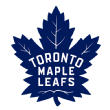
It feels like the Maple Leafs hired one of the best talent evaluators in hockey, but then gave him an edict instead of letting him cook. GM Brad Treliving has made it very clear that he wants size in this lineup, but the Leafs left far too much skill and upside on the board to accomplish that.
There is a very real possibility the Leafs get one depth NHLer (Tyler Hopkins) from this draft class, and that’s it. A lot of the players they selected are very raw, with size being their best attribute. When you leave players like Behm, Limatov, Thretheway, Mooney and Schmidt on the board who have legitimate NHL upside in valuable roles, it feels like a choice







